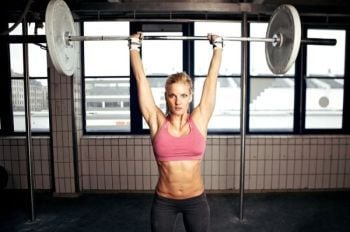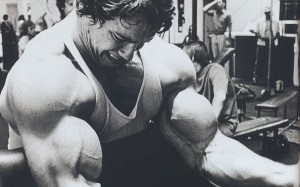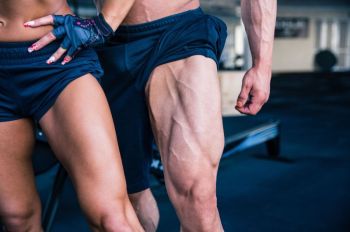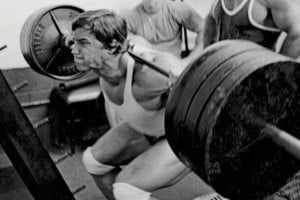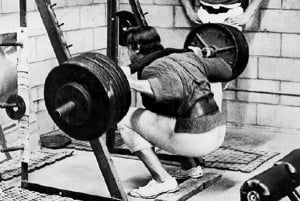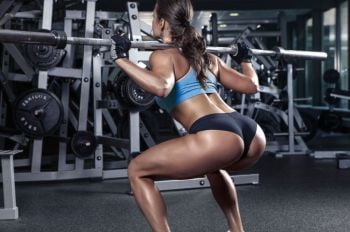Key Takeaways
- Free weight exercises activate more muscle mass than machine exercises, which makes them better for building muscle in the long-run.
- Machines exercises can be helpful for training lagging muscle groups.
- To get the best results, you’ll want to do most of your training with free weights, and use machines to help grow stubborn muscles.
Walk into any gym, and you’ll see the same thing.
Most people are flocked around the weightlifting machines like the pec deck, lateral raise machine, and cable curls.
Then, there’s the minority of people who stick to the bench, squat rack, and dumbbells.
And if you were to ask both groups why they train the way they do, they’d both give you what sound like good answers.
Some say that machines are better at training individual muscle groups, like the pecs, biceps, and triceps. They also say that machines are safer than free weights.
The other side says that free weights are better for building whole-body strength and muscle and give you more “bang for your buck” in terms of gym time, and that weightlifting machines can’t hold a candle to free weights in any regard.
So, which side should you listen to?
Well, the short answer is that if you want to build muscle as quickly, safely, and efficiently as possible, then you want to use free weights for the majority of your training.
That doesn’t mean machines are useless, though, and you’ll usually make faster progress if you use both machines and free weights.
By the end of this article, you’ll know the difference between free weights and machines, the pros and cons of both training methods, and how to get the benefits of both training styles.
Let’s start at square one.
Table of Contents
+
What’s the Difference Between Machines and Free Weights?
There’s no definitive definition for what’s considered a “machine exercise” and a “free weight exercise,” but in general, here’s how people differentiate them:
A machine exercise locks you into a fixed range of motion, where you only need to focus on pushing the weight.
The chest press machine is a common example. Here’s what it looks like:
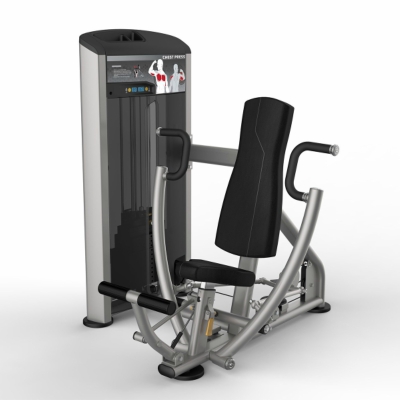
In this case, the handles are locked into a fixed path, and all you have to do is push.
Machine exercises usually require specialized weightlifting machines, like a bicep curl machine, or they can be as simple as a handle attached to a cable.
A free weight exercise is one that forces you to control the direction of a weight while you move it, using many other muscles to keep the weight moving in the right direction.
The bench press is a good example, where you have to use the stabilizing muscles of your shoulders, back, and legs to keep the bar moving in the right direction, while your chest does the lion’s share of actually pushing the weight.
Most free weight exercises tend to use dumbbells and barbells, but they can also include kettlebells, sandbags, medicine balls, and other tools.
There’s a fair amount of overlap between free weights and machines, but there are also some key differences that put free weights on top.
Why Machines Aren’t Usually As Good as Free Weights
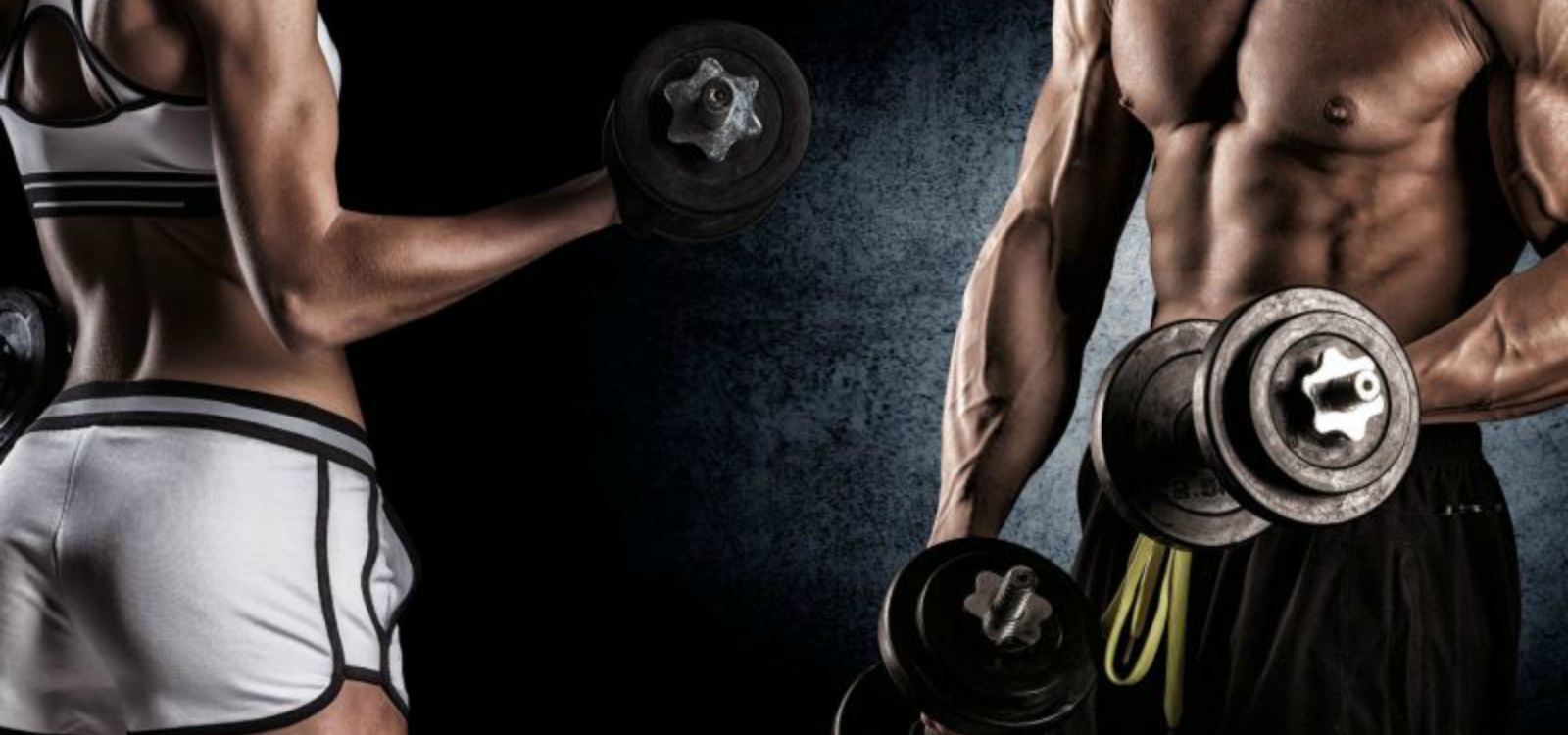
Talk to any group of lifters with several years of training under their belts, and 99% of them will tell you that free weights are better than machines.
For the most part, they’re right.
Free weights create more muscle activation, which means that they also usually do a better job of stimulating muscle growth.
For example, the barbell back squat produces 43% more total muscle activation than the Smith machine squat.
What this means is that with every rep of a free weight exercise, you use more total muscle mass than you would on a machine exercise.
The barbell squat, one of the most common free weight exercises for training legs, involves your quads, hamstrings, glutes, calves, back, and even your abs.
On the other hand, a machine leg exercise like the leg extension does a good job of training your quads, and not much else.
In sum, you’ll get more out of your time in the gym by focusing on heavy, compound, free weight exercises like the back squat, deadlift, military press, and bench press.
Free weights also have the benefit of being the same no matter where you go. Barbells and dumbbells in New York are almost exactly the same as they are in Los Angeles, or anywhere else in the world.
Machines, though, are far more specialized. A leg extension machine from one company might feel very different from one from another company, and that can make it hard to track your progress if you change gyms frequently.
For the same reason, free weights are a much better option for home gyms.
You can train every muscle in your body effectively with a barbell, some weights, and a few dumbbells.
That’s not the case with machines.
To fully equip a home gym, you need a variety of different machines which costs more and takes up more space than free weights.
So, if you have to choose between training exclusively with free weights or machines, you should choose the former.
The good news? You don’t have to choose.
Good Reasons to Use Machines
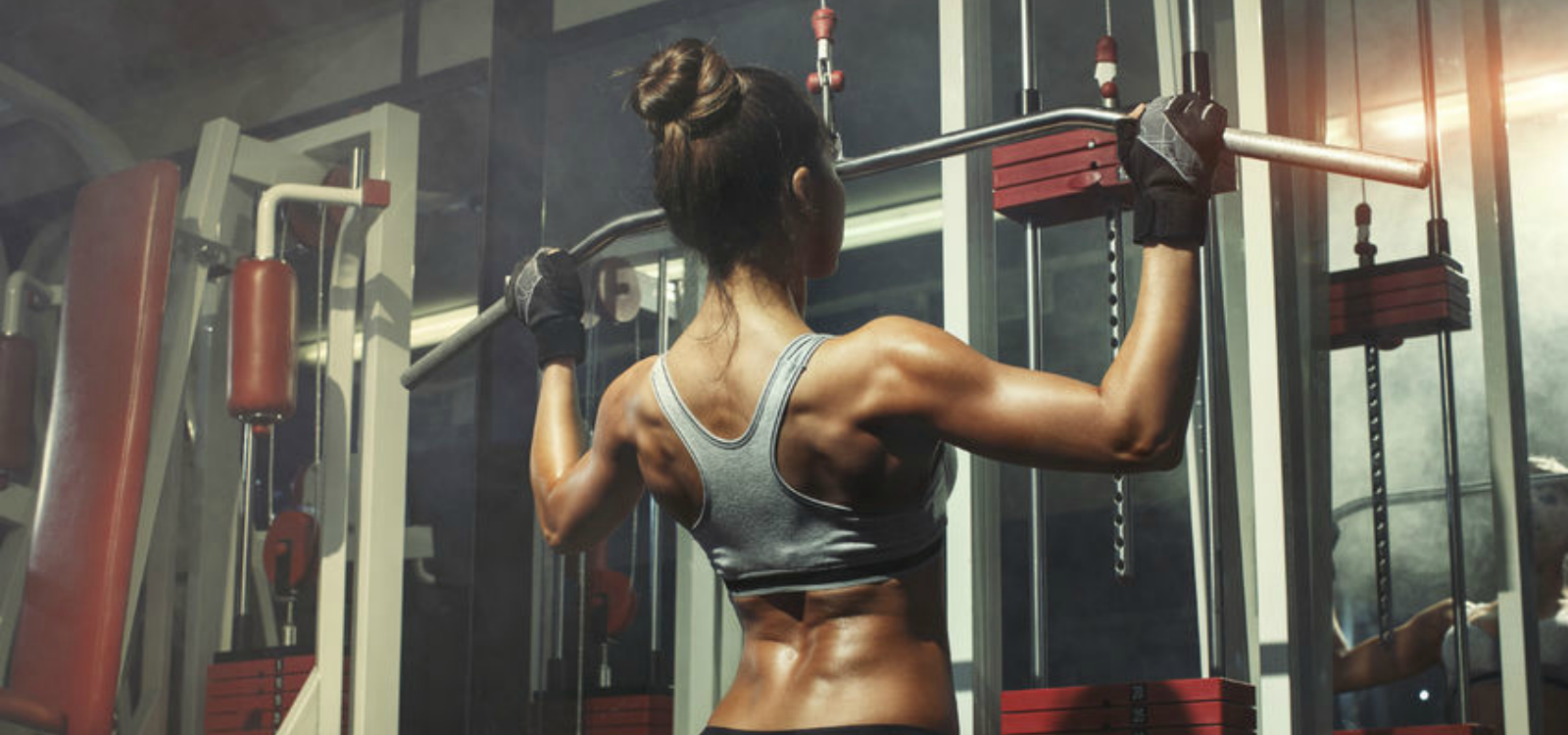
Despite their drawbacks, it’s still wise to include a few machine exercises in your workout routine.
Some muscle groups are hard to train with free weights alone, with calves being one of the worst offenders.
Sure, you can do barbell calf raises, but it becomes very difficult to do those effectively once you start using heavier weights.
The calves respond best to a combination of bent-leg and straight-leg calf exercises, both of which are easier to do with machines.
Take the seated calf raise, for instance. Would you rather use a machine, or lay a heavy barbell across your thighs?
I’m guessing you’d prefer the calf machine.
Another benefit of machine exercises is that they can be useful for training lagging muscle groups.
As you just learned, machine exercises don’t involve as many muscle groups as free weight exercises.
Normally, that’s a bad thing, but what if you want to focus on a particular muscle group?
That’s where machines can come in handy.
Let’s say that you’ve already done several heavy sets of bench, and your arms and shoulders are fried. You feel like your chest could use some more volume, though, so you hop on the chest press machine and knock out a few more sets.
Or, maybe your chest is tired, but you want to work on your arms some more. In that case, you could knock out some biceps curls and triceps extensions after benching.
Here are some other examples of how you could use machines to train lagging muscle groups:
- After squats, use the leg press and leg extension machine to target your quads.
- After bench, use the chest press machine and pec deck to target your chest.
- After deadlifts, use the lat pulldown machine and preacher curl machine to target your back and biceps.
How Much Time Should You Spend on Machines?
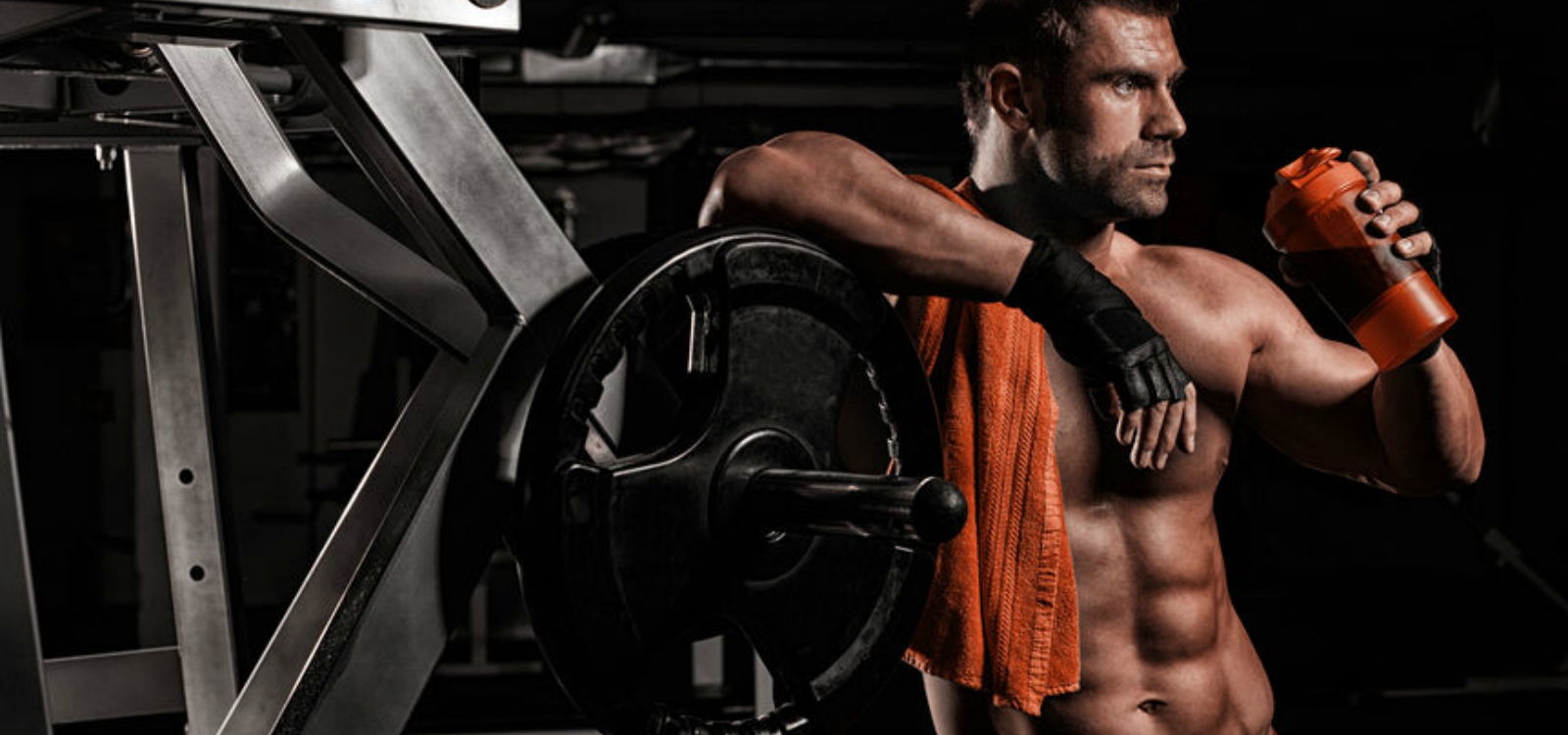
You know that you should spend most of your time training with free weights.
You also know that machines can be helpful for training lagging muscle groups.
So, when should you start training with free weights, and how much should you use machines?
Well, there’s nothing wrong with jumping into the deep end and training with free weights from the very beginning. In fact, some of the best beginner weightlifting routines around are based on barbell exercises, like Starting Strength and StrongLifts 5 x 5.
If you don’t feel ready to start using barbells and dumbbells, though, then you can still make rapid progress using machine exercises in the beginning.
As a rough guide, you can use this chart to decide how much time to spend on machines and free weights.

Start your workouts with several sets of a free weight exercise, like squats, so you can practice your technique before you’re tired.
Once you feel comfortable with one free weight exercise, replace several of your machine exercises with more free weight training. Keep that up until you’re doing 70 to 80 percent of your training with free weights.
The Best Machine Exercises for Building Muscle
In most cases, which machines you use comes down to what’s available and your personal preferences.
Typically, you want to prioritize machine exercises that involve as much muscle as possible. For example, a machine chest press will generally use more muscle than a pec deck.
As long as you’re doing most of your training with free weights, though, it doesn’t matter all that much which machine exercises you use. Pick a few that target the muscles you most want to grow, get as strong as you can on those exercises, then swap them out with other exercises once you plateau.
When you’re putting together a workout routine, here are some good machine exercises to start with:
Chest
Chest Press Machine
Cable Chest Press
Chest Fly Machine
Pec Deck Machine
Back
Machine Row
T-bar Row
Lat Pull-down
Shoulders
Seated Press Machine
Cable Side Raise
Lateral Raise Machine
Biceps
Preacher Curl Machine
Single-Arm Cable Curl
Cable Curl with a Straight Bar
Cable Curl with Rope Attachment
Triceps
Dip Machine
Triceps Extensions with Rope Attachment
Triceps Extensions with Straight Bar
Quads
Smith Machine Squat
Smith Machine Hack Squat
Leg Press
Leg Extension Machine
Hamstrings
Lying hamstring curls
Seated Hamstring curls
Calves
Standing Calf Raise Machine
Seated Calf Raise Machine
Glutes
Leg Press
Smith Machine Squats
Smith Machine Hack Squat
Butt Blaster Machine
The Bottom Line on Free Weights Versus Machines
All things considered, free weight exercises are better than machines.
They activate more muscle with every rep, which leads to more muscle growth in the long-run.
That said, you don’t have to choose one or the other.
Machine exercises can be helpful for bringing up lagging muscle groups, especially the arms, shoulders, and calves.
If you want to build as much muscle as possible, you’ll want to use free weights for the majority of your training, and then strategically use machines to work on the muscle groups you want to grow the most.



